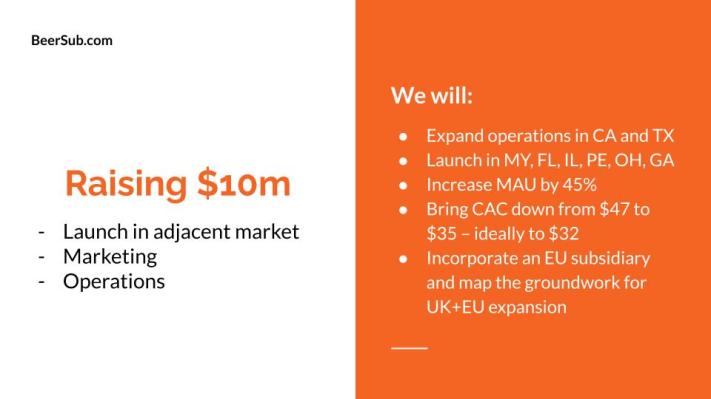You’ve brushed off your Keynote skills, you’re giddy that you’re finally going to be able to start paying yourself a living wage, and you are excited to start pitching your startup’s next round of funding to your investors. It’s heady times, for sure, but hit the other pedal there for a moment, friend — you may be forgetting something.
After working with hundreds of founders on raising money — including the fantastically popular Pitch Deck Teardown series here on TechCrunch+ — there’s one slide that almost every founder gets woefully wrong. The slide is often referred to as The Ask. Or, as one investor friend calls it, the “what is my $10 million going to buy me”? slide.
TechCrunch+ is having an Independence Day sale! Save 50% on an annual subscription here. (More on TechCrunch+ here if you need it!)
The Ask is a sensitive topic to a lot of inexperienced entrepreneurs, which makes sense. Trying to right-size a funding round can be a little overwhelming, and there are a thousand different ways of building a startup. If you were successful in raising $8 million, you can do things one way. If you raised $12 million, you could perhaps launch more features of your product a little faster, or experiment more, or go after an additional market earlier. You know that. Your senior staff knows that. Your investors know that. But regardless, you need a Plan A.
What do those key metrics need to look like in order to raise not this round of funding, but your next one?
What do you need to do?
A lot of founders will tell you that they are trying to raise enough money to survive for the next 18 months. That’s probably true, but that will be true regardless of how much money you raise. A better approach is to think about what you need to accomplish to raise your next round of funding, and then work backward from there. This is probably a combination of metrics and milestones.
Metrics are the measurable parts of your business that grow and evolve over time. One of the best metrics you have is revenue, but there could be many others: the number of sales, average order value (AOV), monthly or annual recurring revenue (MRR or ARR, respectively), customer acquisition cost (CAC), customer lifetime value (LTV), daily and monthly active users (DAU and MAU), retention rate (usually expressed by its inverse, churn rate) and much more. What do those key metrics need to look like in order to raise not this round of funding, but your next one?
Milestones are also measurable parts of the business, but instead of tracking them over time, they tend to be binary: You’ve either hit a milestone or you haven’t. For startups, this could be key hires; finding the perfect, experienced CFO that can help take your company public is one major milestone a lot of companies at some point need to hit. Product launches (coming out of beta), launches in particular markets (launching only in California) and localization (launching your app in Spanish and French, for example) are also important milestones. Financial milestones are also common; the first time you make a single dollar from any customer is a huge shift in the business. When a customer, on average, starts to make you more money than it costs you to acquire them is another. For earlier-stage companies, completing a customer validation phase by talking to, say, 100 potential customers is a milestone.
When you’re raising money, you will be mapping out a set of milestones that you need to hit in order to validate your company. In addition, you’ll set a number of trigger points for metrics — hitting $1 million ARR, having 5,000 daily active users or finding a combination of customer acquisition channels that means you can acquire customers at a reasonable blended CAC, for example.
So let’s examine how to put together a great “ask” slide by ascertaining what it takes to determine how much you need to raise, how to create a specific set of goals and how to bring it all together in a coherent whole.













/cdn.vox-cdn.com/uploads/chorus_asset/file/25784221/247333_EOY_Package_Check_In_CVirginia_PRIME.jpg)






Discussion about this post